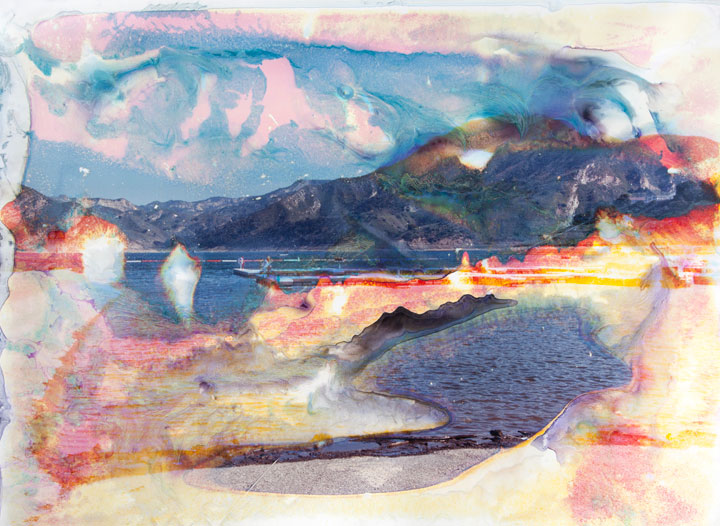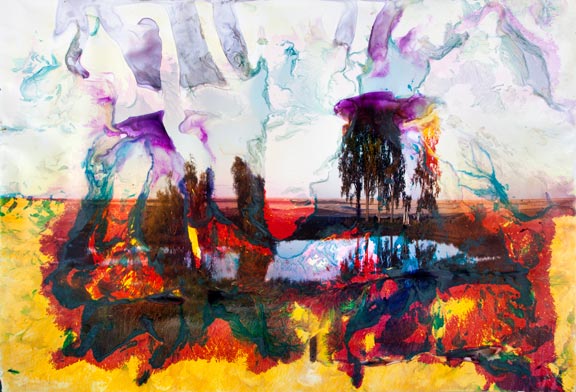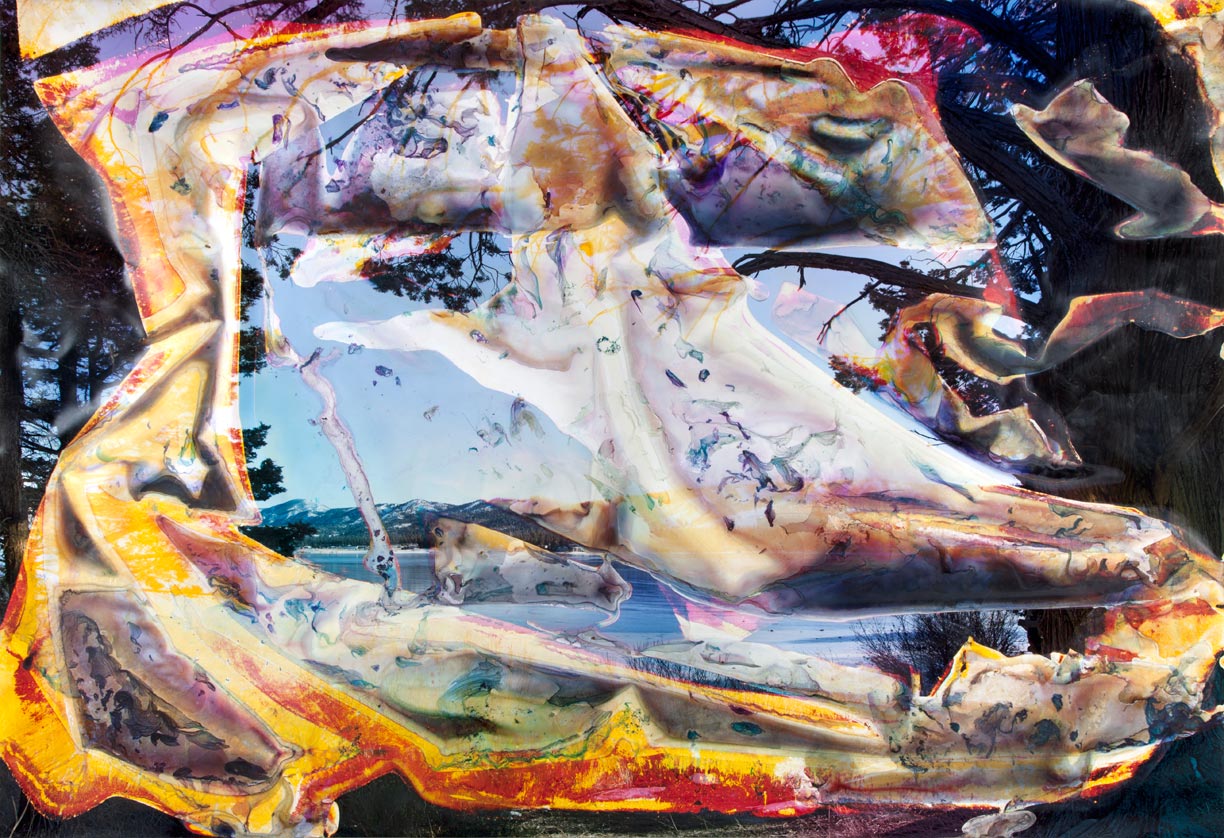

Yuba Lake, CA
C-Print soaked in Yuba Lake water
2011
The word “subject” in photography is a tenuous term, a membrane of ambiguities. Typically in photography, the subject is what is captured by the camera. My work aims to disrupt and describe the process of reading the subject of a photograph by emphasizing the material processes and properties of photography. I have attempted to develop a body of work about photography as a subject and object, which also investigates the relationship between these two terms.
How the subject of a photograph relates to the material properties of the print is one of my fundamental interests when presenting a photograph. When a photograph becomes more blurred or scratched, an invisible veil or screen emerges between viewer and subject. This veil, which is always present but conventionally repressed, is allowed to breathe. Extending this photographic veil allows me to focus on the unique objectness of the photograph in relation to the other kind of objectness that was photographed. By reducing illusionist depth, one is confronted with a dilemma—how to address two simultaneous realities: the present image surface and the past image depth. And it is this distance between these two points that encourage my photography.
When a photograph becomes more blurred or scratched, an invisible veil or screen emerges between viewer and subject. This veil, which is always present but conventionally repressed, is allowed to breathe.


Sylvan Lake, CA, C-Print soaked in Sylvan Lake water, 2012
Lost Lake, WA, C-Print soaked in Lost Lake water, 2012
In Lakes and Reservoirs, a color photograph of a lake or reservoir is made, and then soaked in the lake or reservoir water that I have collected. After a period of time, the water breaks down the color photograph. I am continually fascinated by color photography, particularly the chromeogenic (C-print) process. It was amazing to learn about the genius that is inherent in this technology.
Prior to Lakes and Reservoirs, I was making salted paper prints where I collected fluids from a subject and used them to chemically develop their own image. For instance, I printed a picture of my friend Will and used his tears as the salt component in the salted paper printing process for his portrait. This interest in a subject’s collaborative involvement of their image production, plus my fascination with color photography, lead me to Lakes and Reservoirs. The main difference between these two collections, however, is that the subject’s fluid in Lakes and Reservoirs degrades its own image rather than helps photographically clarify it.


Mary’s Lake, MT
C-Print soaked in Mary’s Lake water
2012
In choosing materials to print with, I usually adhere to ideas of “photographic truth.” The often literal relationship of my materials to my subjects is a way of investigating the indexical nature of photography. Light describes an index of what was in front of the camera, however, the material I print offers another form of index. It is this relationship between the subject of the images and the real material from which it is made, which becomes another kind of subject that creates these lingering metonymic or metaphorical linkages. My work offers an opportunity to look at the screen of material and dive into the photographic illusion simultaneously. In all of my works, it is the conflation of material and image subject that produces much of the meaning. When subject becomes photograph, it dramatically changes. The photograph transforms the subject. And in a lot of these works, the subject returns to its re-presentation of the printing process.


Lake Casitas, CA, C-Print soaked in Lake Casitas water, 2008
Debra Lake, WA, C-Print soaked in Debra Lake water, 2012


Big Bear Lake, CA, C-Print soaked in Big Bear Lake water, 2012